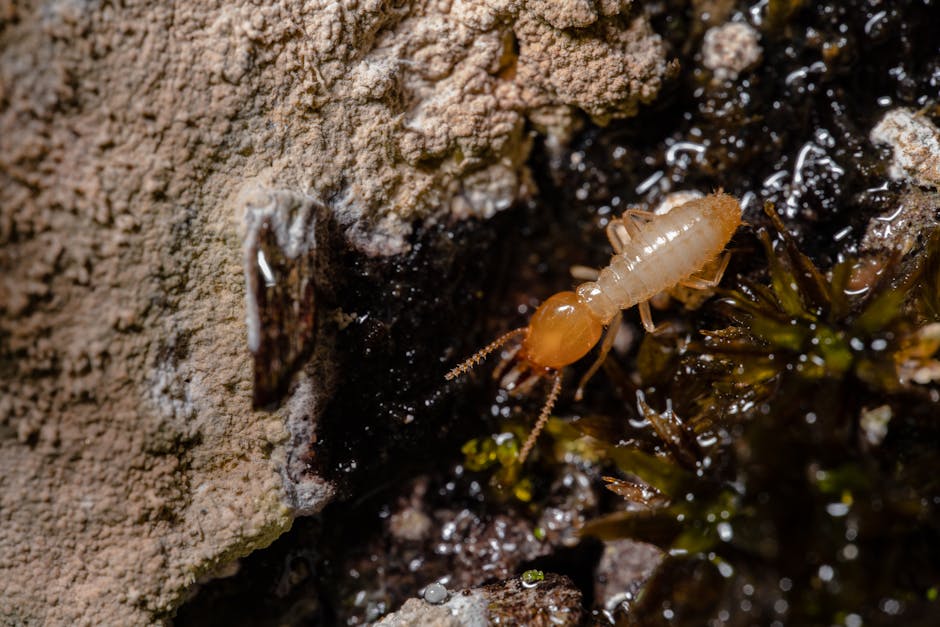A flea infestation can be a nightmare for both pets and their owners. Apart from being a nuisance, outdoor fleas can also be carriers of diseases, making it crucial to eliminate them. Outdoor flea control is a comprehensive process involving understanding the flea life cycle, identifying infestation signs, implementing effective control techniques, and maintaining a flea-free yard. By following this quick guide, you can ensure your outdoor spaces are not just flea-free, but also safe and welcoming for both you and your pets.
Understanding the Outdoor Flea Life Cycle
Comprehending the life cycle of fleas is the first step towards efficiently combating an infestation. A flea’s life cycle comprises four stages–egg, larva, pupa, and adult. Each stage presents a different challenge and vulnerability, marking the best points for control measures. For example, while adult fleas can be warded off using standard repellents, eggs and larvae may require more specialized treatments.
- Egg: The initial stage where fleas lay their eggs in hosts’ fur or in the environment.
- Larva: Here, the eggs hatch into larvae which remain hidden in dark, cozy places.
- Pupa: The transitional stage where larvae encase themselves in a cocoon, developing into an adult flea.
- Adult: The final stage, where fleas reach their full size and begin feeding on their hosts.
🔵 Pro Tip: Implementing control measures at the pupa stage can be particularly effective since it targets the fleas before they can lay eggs and expand their population.
Identifying Flea Infestations in Your Yard
Before starting the flea eradication process, confirm that a flea infestation has indeed taken place. Noticing excessive scratching by pets in the yard can be one of the first signs. Spotting flea dirt or even the fleas themselves on your pets or on humans also points to an invasion.
🔵 Pro Tip: Prompt detection aids in smooth control. Extend your search beyond your pets — examine soft furnishings, carpets, and cracks in the floor, as fleas can hide in such places.
Effective Techniques for Outdoor Flea Control
After identifying a flea infestation, it’s time to put an end to it. There are several methods to eliminate fleas outdoors, and the choice depends on several factors, including the scale of infestation, the size of your yard, and the presence of pets and children.
You can opt for natural methods, such as nematodes or diatomaceous earth, that are eco-friendly and pose minimal danger to non-target organisms. Chemical methods, though potent, should be used judiciously due to potential adverse effects on the environment and health risks. Alternatively, professional pest control services can also be a viable option, especially for large-scale infestations.
✔ Best Practice: Fleas can develop resistance to a single method over time. Hence, it’s advisable to alternate between different control methods. This process doesn’t just ward off the fleas but also delays their resistance development, giving you the upper hand.
Implementing these steps correctly and promptly can help you regain control of your yard and enjoy an itch-free outdoor time with your pets. Make sure to practice safety if opting for chemical controls and continue following preventative measures to avoid any future infestations.
Proper and Safe Use of Chemical Flea Controls
When nature’s solutions aren’t enough, chemical flea controls can offer efficient and immediate results. However, they should be used with caution. To protect you, your family, and the environment, it’s essential to follow some safety guidelines while using chemical flea controls:
- Always wear protective gear such as gloves and masks when applying chemical treatments.
- Never use chemical controls near water bodies to prevent contamination.
- Store flea control chemicals out of reach from children and pets.
🔵 Pro Tip: Remember to read and strictly follow the instructions on the packaging. Overuse does not mean more effectiveness but might lead to harmful side effects.
Maintaining a Flea-Free Yard
Maintaining a flea-free yard is easier than dealing with an infestation. Regular preventive measures can help keep these pests at bay:
- Ensure your pets are regularly treated for fleas as per vet’s advice.
- Maintain a clean and uncluttered yard. Remove old leaves and branches that provide perfect hideouts for fleas.
- Mow your lawn regularly to create a less inviting environment for these pests.
✔ Best Practice: A combination of preventive measures can provide a sustainable solution to flea problems. An integrated plan comprising regular cleanliness, lawn maintenance, and pet care can keep your yard flea-free in the long run.
| Method | Pros | Cons |
|---|---|---|
| Natural Flea Controls | Eco-friendly, non-toxic | May take longer to work |
| Chemical Flea Controls | Quick results, wide range | Potential health risks, might harm non-target organisms |
| Professional Pest Control | Effective, stress-free | Can be expensive |
In conclusion, eliminating fleas from your outdoors is not just about your comfort and that of your pets. It’s also about ensuring a healthy living environment. The key is understanding the flea life cycle, identifying flea infestation early, choosing the best control methods, and sustaining a flea-free yard. A flea-free yard is a happy yard. Don’t let these tiny pests take that happiness away. Take control today!
Key Takeaway:
- Understanding the life cycle of fleas (egg, larva, pupa, adult) can help identify ideal points for control measures.
- Early identification of a flea infestation enables easier control.
- A mix of natural and chemical flea control methods, along with professional pest control if necessary, can be effective in elimination.
- Using chemical flea controls requires adherence to safety procedures to protect non-target organisms.
- Adopting preventive measures ensures long-term flea resistance.
In combating fleas, proactive prevention is as critical as effective elimination. Implementing the knowledge and best practices discussed in this guide will not only clear your yard of fleas but also create an environment less conducive to future infestations.
FAQs
Q: How often should I treat my yard for fleas?
A: The frequency of treating your yard for fleas depends on the severity of the infestation and the method of control. Generally, if you notice signs of flea activity between treatments, it’s time to take action.
Q: Will mowing the lawn help keep fleas away?
A: Yes, regular lawn maintenance like mowing can help keep fleas at bay by reducing the areas where they can hide and breed.
Q: Can fleas become resistant to treatment methods?
A: Yes, fleas can develop resistance to treatment methods, especially if one method is used extensively. That’s why it’s beneficial to rotate different methods for optimal control.
Q: Is professional pest control required for all flea infestations?
A: Not necessarily. Smaller infestations can often be managed with DIY treatments. However, for larger, stubborn infestations, you may need to call a professional.
Q: How can I spot flea dirt?
A: Flea dirt looks like tiny black specks or dirt in your pet’s fur or your yard. It’s essentially flea feces, composed of digested blood. A good way to confirm it’s flea dirt is by placing it on a white paper towel and wetting it. Flea dirt will dissolve into a red or rust color.
Remember, an informed approach is your best weapon against flea infestations. Feel free to share this article to educate others. Explore our site for more pest control advice and guidance.






